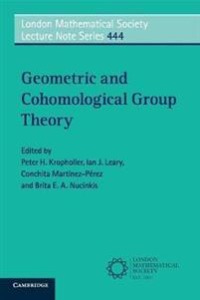
Liknande böcker
The Burnside problem and identities in groups
Problema Bernsajda i toždestva v gruppach
Bok av Sergej I. Adjan
Three years have passed since the publication of the Russian edition of this book, during which time the method described has found new applications. In [26], the author has introduced the concept of the periodic product of two groups. For any two groups G and G without elements of order 2 and for any 1 2 odd n ~ 665, a group G @ Gmay be constructed which possesses several in- 1 2 teresting properties. In G @ G there are subgroups 6 and 6 isomorphic to 1 2 1 2 G and G respectively, such that 6 and 6 generate G @ G and intersect 1 2 1 2 1 2 in the identity. This operation "@" is commutative, associative and satisfies Mal'cev's postulate (see [27], p. 474), i.e., it has a certain hereditary property for subgroups. For any element x which is not conjugate to an element of either 6 1 or 6 , the relation xn = 1 holds in G @ G * From this it follows that when 2 1 2 G and G are periodic groups of exponent n, so is G @ G * In addition, if G 1 2 1 2 1 and G are free periodic groups of exponent n the group G @ G is also free 2 1 2 periodic with rank equal to the sum of the ranks of G and G * I believe that groups 1 2







